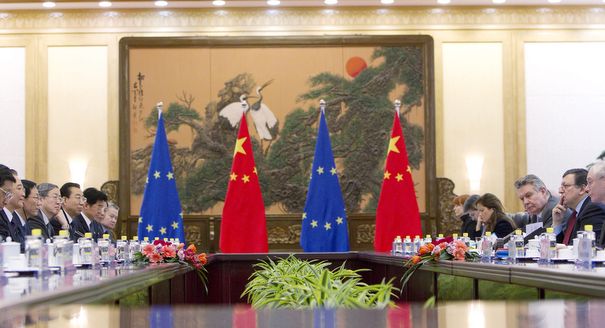Maybe not surprisingly, the Asia Foundation's annual trilateral U.S.-China-Japan consultations this year featured a full two-and-a-half-hour panel on Europe and its crisis. Under normal circumstances, the forum's participants do not bother much about the old continent, which plays no strategic role in their region outside of obviously strong trade relations. But things were very different this year. During the financial crisis all sides have learned that in a globalized world everything is interconnected, and that Europe, therefore, is by default a pre-eminent player in the region. Should the euro fail, or the EU break apart, the pains would be felt all over the globe, not least in Asia, where economies are seemingly going from strength to strength.
During the discussions it became clear that despite Europe's current weakness, one feature of European politics is very much the envy of many Asian observers: the continent's institutional and procedural framework that allows the countries of Europe to feed their problems, conflicts, and crises into an existing mechanism with established rules to have them fixed. However inefficient and underdeveloped that structure might often seem to Europeans themselves, the fact that Europe has both the EU and NATO was counted as a huge plus. A few days before the forum, the Economist had run an article on the absence of such an "architecture" in Asia, and that this lack of structure made all existing and emerging conflicts in the region, of which there are many, more threatening.
"At least the Europeans are doing something together," said a Japanese economist, explaining the EU's fiscal pact and the "six-pack" that preceded it at length to the audience. Without an architecture, she remarked, there is no outside incentive for Asian countries like her own, to do the painful things needed to make their economies and societies fit for the coming decades. Not to speak of the sense of security an integrated system creates. She was acutely aware of the deficiencies in Europe’s management of the crisis, but she was full of admiration for the Europeans’ level of integration and their awareness that they were in it together, instead of everybody just doing their own unconnected thing.
For a European, this was a healthy reminder of just how big the achievements of the integration process really are. To be sure, Europe is flawed in many ways, and the price of being in such a closely-knit union might appear very high at times. But essentially, no one is out there alone. By comparison, in Asia, all existing forums, such as APEC, ASEAN and the like, are more loosely organized talk shops with very little binding power. Asian nations are quintessentially alone in the pressure cooker of a humming continent that feels the future is his. Bilateral relations dominate diplomacy, and the labyrinth of these connections between all and everyone is characteristically called a "noodle soup". The United States and, increasingly, China serve as nodes in this free-floating network, but an architecture it is not. There is no inherent stability in the system, unlike in Europe, where both NATO and the EU provide a stability and a safety net that has become so natural Europeans don't even hold it in much esteem any more. Quite to the contrary. They have become such a self-understood part of the continent's setup that they have turned into ideal scapegoats for all and everything that's wrong with the world.
Europe is the most, and Asia the least "architected" region of the world. The loneliness of nations in Asia's un-integrated neighborhood, and the insecurity and fear it breeds, should serve as a reminder to Europeans in this crisis of just how valuable the system they have created for themselves is. It should also remind people that underneath the economic narrative that so dominates the European debate at the moment lurks a much deeper story: a story of peace and freedom from fear, and how architecture was the key to creating both. "Homeless" Asians have an instinctive grasp of that story.






